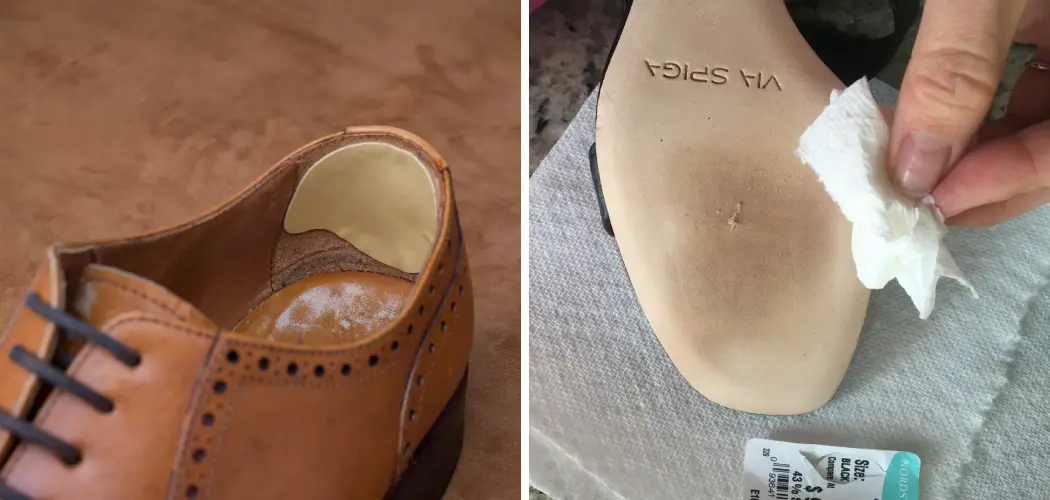Removing sticky labels from the inside of shoes can be a challenging task, but with the right methods, it becomes a manageable process. Whether it’s a size sticker or a brand label, these sticky nuisances can cause discomfort and spoil the look and feel of your footwear.
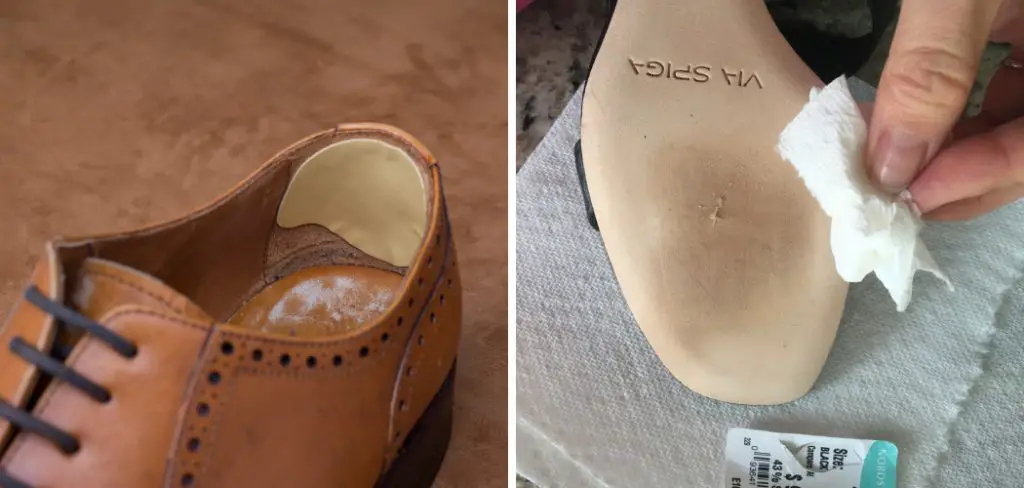
The adhesive residue left behind can attract dirt, making the inside of your shoes look messy and potentially affecting your comfort. In this guide, we’ll explore several effective techniques on how to remove sticky labels from inside shoes. From using household items like vinegar and baking soda to employing specialized products such as adhesive removers, we’ll cover a range of solutions suitable for different types of shoe materials.
Understanding the proper methods ensures you can maintain the integrity of your shoes while achieving a clean, sticky-free surface. Whether dealing with leather, fabric, or synthetic shoes, these tips will help you tackle sticky labels efficiently and keep your footwear in top condition.
Importance of Removing Sticky Labels
The importance of removing sticky labels from the inside of shoes goes beyond aesthetic appeal. Firstly, these labels can cause discomfort, especially during long periods of wear, as they can rub against the foot and cause irritation or blisters. Additionally, the adhesive used on these labels can degrade over time, not only attracting dirt and grime but also possibly damaging the shoe’s interior material.
This can shorten the lifespan of your shoes and affect their overall appearance and hygiene. Removing these labels carefully ensures that your footwear remains comfortable and in good condition, thereby extending its usable life and maintaining its visual and functional qualities.
Why Sticky Labels in Shoes Are a Problem
Sticky labels inside shoes often seem innocuous upon purchase, but they quickly manifest as a source of continuous annoyance and potential discomfort. When these labels are not removed, or not removed cleanly, they can create a rough texture that directly comes into contact with the skin or socks, leading to irritation or even blisters with prolonged wear.
For individuals with sensitive skin, this can be particularly problematic, causing unnecessary discomfort during daily activities or exercise. Additionally, the area around a sticky label can gather dust and dirt more readily than other parts of the shoe, creating an unhygienic environment for your feet.
This issue is further compounded in warmer climates or during physical activity, where sweat can mix with the residue to produce an ideal breeding ground for bacteria. Hence, the presence of sticky labels can significantly diminish the overall comfort, hygiene, and aesthetic appeal of shoes, making their effective removal a crucial step in shoe maintenance and care.
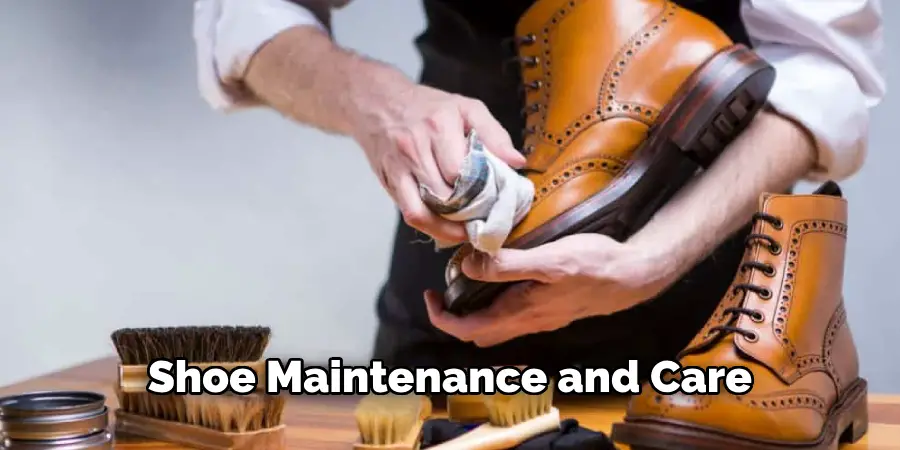
Impact on Shoe Aesthetics and Durability
The aesthetic and durability aspects of shoes are significantly impacted by the presence of sticky labels and their residue. Visually, remnants of adhesive or partially torn labels can mar the inner beauty of shoes, making them appear unkempt and poorly maintained. For those who take pride in their footwear, this can be especially disheartening.
Beyond mere appearance, the sticky residue can catch and hold onto dirt and debris, leading to a degradation of the material over time. This is particularly detrimental for high-end or delicate shoes, where the integrity of the material is paramount to the shoe’s longevity and overall value. Leather shoes, for example, can become discolored and weakened at spots where adhesive has been left to sit.
Similarly, fabrics may tear or fray more easily when subjected to the constant stress of adhesive pulling at the fibers. Consequently, the effort to remove sticky labels and their residue is not only about maintaining the visual appeal of shoes but also about preserving their structure and extending their lifespan.
Common Types of Labels Found Inside Shoes
The labels you encounter inside shoes can vary widely, but they typically fall into a few common categories. Size Labels are perhaps the most universal, providing essential information about the shoe size. These are usually stuck firmly to the interior sole or the side wall of the shoe. Material Information Labels detail the composition of the shoe, indicating what materials were used in its construction, such as leather, cotton, or synthetic fibers.
This information is crucial for proper care and maintenance. Brand Labels offer branding for the manufacturer and can range from simple logos to more elaborate designs that include care instructions or the brand’s history. Price Tags and SKU Labels are often placed inside shoes to prevent tampering before purchase; these can leave particularly stubborn residues due to their adhesive qualities meant to prevent theft.
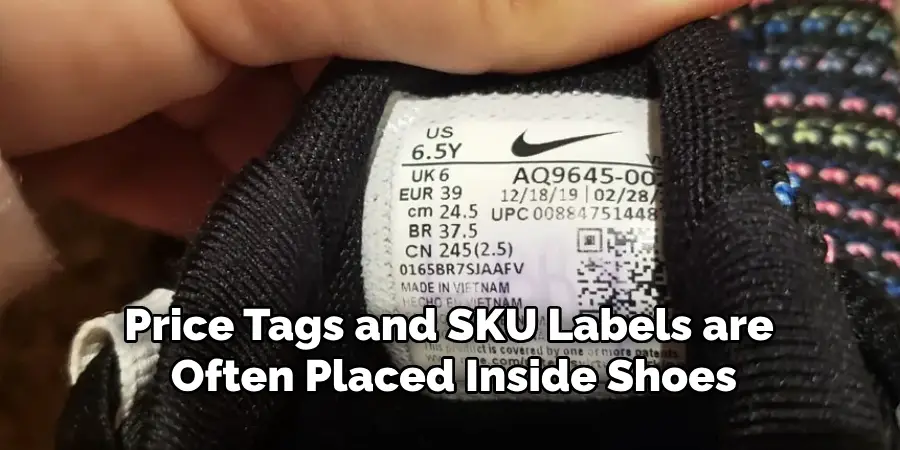
Materials Needed for Label Removal
Successfully removing sticky labels from the inside of shoes without damaging the material requires a few basic tools and supplies. Here is a list of materials that will come in handy:
- Tweezers: To carefully peel off the labels or stickers without tearing them.
- Soft Cloth or Sponge: For applying removal solutions and gently wiping away residues.
- Warm Water: Useful for softening the adhesive and cleaning the area afterwards.
- Mild Soap or Detergent: Helps in cleaning the residue without harming the shoe material.
- Rubbing Alcohol or Isopropyl Alcohol: Effective in dissolving most adhesives without damaging most shoe materials.
- White Vinegar: A natural alternative to chemical solvents that can break down adhesive residues.
- Baking Soda: Can be used in conjunction with vinegar or water to create a gentle scrubbing paste.
- Cotton Swabs or Q-tips: Perfect for applying solvents to small areas with precision.
- Hair Dryer (Optional): Providing gentle heat can help in loosening the adhesive, making it easier to peel the label off.
- Adhesive Remover: Specialized products designed to safely dissolve adhesive residues. Ensure the product is suitable for the type of shoe material you’re dealing with.
Evaluating the Shoe Material and Construction
Evaluating the Shoe Material and Construction before attempting to remove any sticky labels is a crucial step in ensuring the integrity and longevity of your footwear. Different materials require different care tactics to prevent damage during the label removal process.
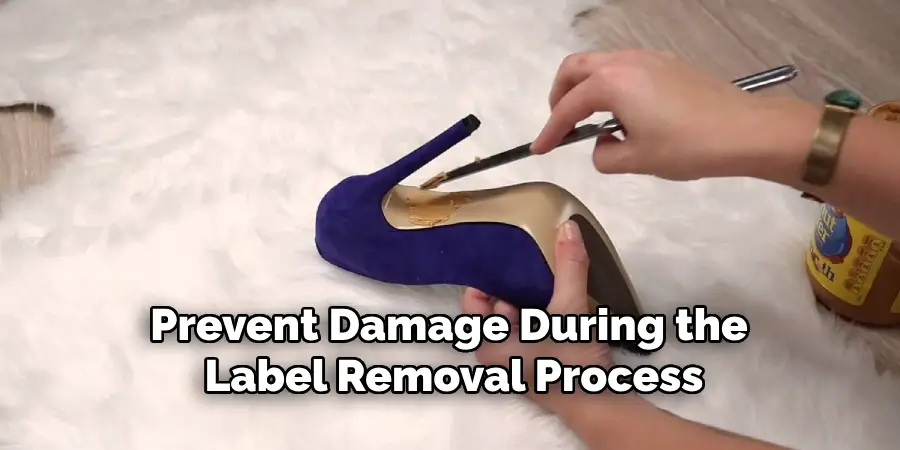
For example, leather shoes demand a gentle approach using minimal liquid, as excessive moisture can warp the leather and fade its color. Suede shoes are even more delicate, with a need for dry cleaning methods due to suede’s sensitivity to water and chemicals. On the other hand, shoes made from synthetic materials may tolerate a wider range of solvents for adhesive removal, but still necessitate caution to avoid deterioration of the material.
The construction of the shoe also plays a vital role in label removal. For instance, shoes with insoles glued down might allow for less aggressive techniques, as too much force or moisture can cause the insole to detach.
Conversely, shoes with removable insoles offer an opportunity to more thoroughly clean the area without risking damage to the shoe’s structure. Similarly, the adhesives used in the shoe’s construction may react differently to various solvents, making it imperative to perform a spot test on an inconspicuous area before proceeding.
10 Methods How to Remove Sticky Labels from inside Shoes
1. Using Heat (Hairdryer Method)
One of the most effective ways to remove sticky labels from the inside of shoes is by using heat. A hairdryer can be a particularly handy tool for this purpose. Begin by ensuring your shoes are clean and dry. Plug in a hairdryer and set it to a medium or high heat setting. Hold the hairdryer a few inches away from the label and apply heat for 30-60 seconds.
The warmth will soften the adhesive, making it easier to remove. Once the adhesive is warm, use your fingernail or a plastic scraper to gently peel off the label, starting from one corner and slowly working your way across. If any adhesive residue remains, you can clean it off with rubbing alcohol or an adhesive remover, applied to a cloth and rubbed gently until the residue is gone.
2. Using Vinegar
White vinegar is a versatile and natural solution for removing sticky labels. To use this method, mix equal parts of white vinegar and water in a bowl. Soak a cloth or cotton ball in the vinegar solution and apply it to the sticky label. Allow it to sit for a few minutes to break down the adhesive. After soaking, use your fingernail or a plastic scraper to peel off the label. The vinegar should have sufficiently weakened the adhesive, making it easier to remove. If any residue is left behind, apply more vinegar solution and gently rub with a cloth until it is completely clean.
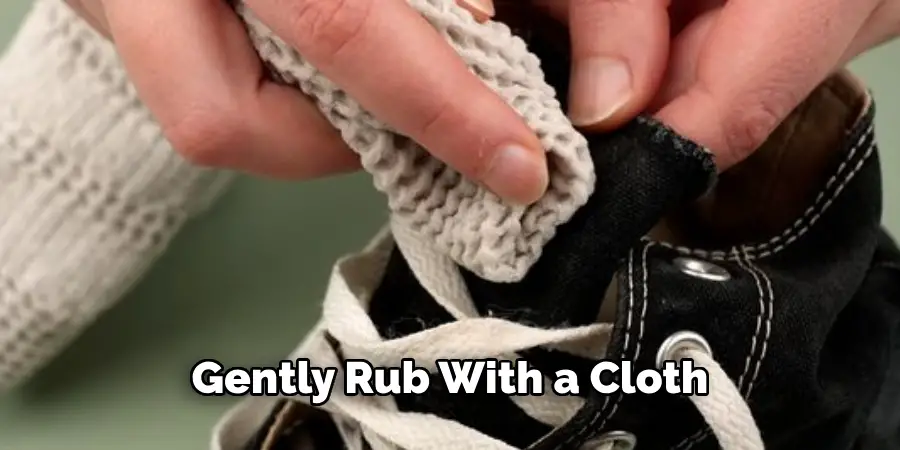
3. Using Rubbing Alcohol
Rubbing alcohol is a strong solvent that effectively dissolves many adhesives, making it a great option for removing sticky labels from shoes. Pour some rubbing alcohol onto a cloth or cotton ball and apply it directly to the label. Allow it to sit for a few minutes to penetrate and break down the adhesive. Once the adhesive is softened, use a plastic scraper or your fingernail to lift the edge of the label and peel it off. Any remaining adhesive can be cleaned off by applying more rubbing alcohol and rubbing gently with a cloth until the surface is clean.
4. Using Baking Soda Paste
Baking soda is mildly abrasive and can help remove sticky residue without damaging your shoes. To make a baking soda paste, mix baking soda with a small amount of water until you form a thick consistency. Apply this paste to the sticky label and let it sit for 10-15 minutes. Using a soft brush or cloth, scrub the paste and label off the shoe. The abrasive nature of the baking soda will help lift the adhesive. After the label is removed, wipe away any remaining baking soda paste with a damp cloth and dry the shoe thoroughly.
5. Using Peanut Butter
Peanut butter might seem like an unusual choice, but its oily nature makes it effective in breaking down adhesive. Apply a small amount of peanut butter directly to the sticky label and let it sit for about 10-15 minutes. The oils in the peanut butter will help loosen the adhesive. Use a plastic scraper or your fingernail to peel off the label, which should come off more easily now. Clean off any remaining peanut butter and adhesive with a cloth dampened with mild soap and water to leave your shoe residue-free.
6. Using Commercial Adhesive Remover
Commercial adhesive removers are specifically formulated to tackle tough adhesives and are generally safe for most shoe materials. Before using, read the product instructions carefully to ensure it is suitable for your shoes. Apply the adhesive remover to the sticky label according to the instructions. Use a plastic scraper or your fingernail to lift and peel off the label after the remover has had time to work. Finally, wipe away any remaining adhesive remover and residue with a clean cloth.
7. Using Olive Oil
Olive oil is a natural solution that can help break down adhesive without harming your shoes. Apply a small amount of olive oil to the sticky label using a cloth or cotton ball. Let it sit for 10-15 minutes to allow the oil to penetrate and loosen the adhesive. Use a plastic scraper or your fingernail to peel off the label. After removing the label, wipe off any remaining oil and adhesive with a cloth dampened with mild soap and water to ensure the inside of your shoe is clean.
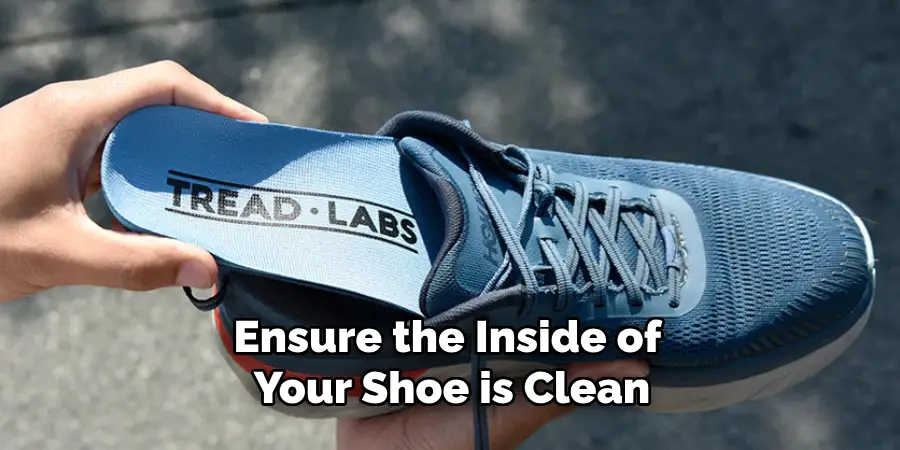
8. Using Freezing Method
The freezing method can make adhesive brittle and easier to remove. Start by placing the shoe in a plastic bag to protect it from moisture. Put the shoe in the freezer for 1-2 hours. Once the adhesive is frozen, use a plastic scraper or your fingernail to chip away at the label. The adhesive should be brittle and easier to remove. If any residue remains, use rubbing alcohol or an adhesive remover to clean it off, ensuring the shoe is completely free of adhesive.
9. Using Goo Gone
Goo Gone is a popular commercial adhesive remover that is highly effective on a variety of surfaces. Before using, ensure the shoe material is safe for Goo Gone by testing a small, inconspicuous area first. Apply Goo Gone to the sticky label following the product instructions. After it has had time to work, use a plastic scraper or your fingernail to lift and remove the label. Any remaining Goo Gone and adhesive can be wiped away with a damp cloth, leaving your shoes clean.
10. Using Nail Polish Remover (Acetone-Free)
Acetone-free nail polish remover can be a good option for removing sticky labels without damaging your shoes. Pour some acetone-free nail polish remover onto a cloth or cotton ball and apply it to the sticky label. Let it sit for a few minutes to allow the remover to penetrate the adhesive. Use a plastic scraper or your fingernail to peel off the label. Clean away any remaining adhesive with a cloth dampened with mild soap and water, ensuring the inside of your shoe is clean and free from residue.
Things to Consider When Removing Sticky Labels from Shoes
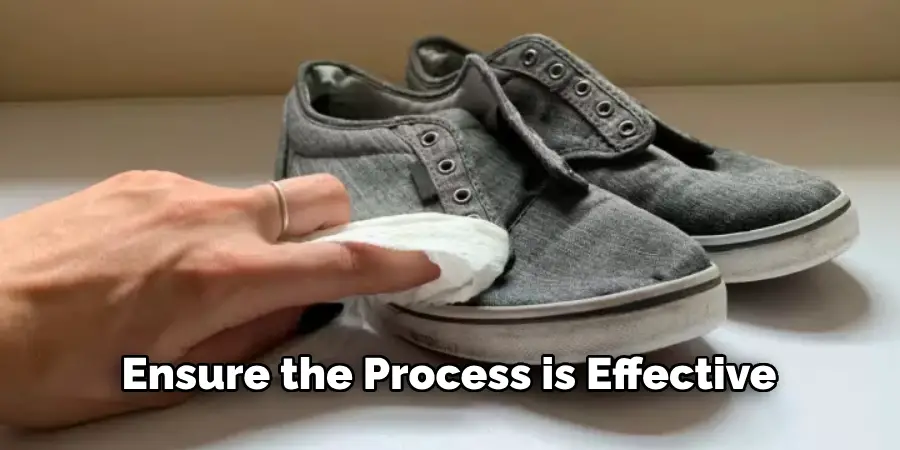
When attempting to remove sticky labels from shoes, there are several important considerations to keep in mind to ensure the process is effective and does not damage your footwear:
- Material of the Shoe: Different materials (such as leather, suede, synthetic) react differently to the cleaning agents mentioned above. It’s crucial to identify the material of your shoe and choose a method that is safe for that specific type.
- Type of Adhesive: The strength and type of adhesive used on the label can vary. Some adhesives may require stronger solvents, while others can be removed with milder solutions.
- Sensitivity of the Skin: If you have sensitive skin, be cautious when using solvents like rubbing alcohol, nail polish remover, or commercial adhesive removers. Wearing gloves can provide a barrier between your skin and these potentially irritating substances.
- Environmental Considerations: If you prefer to use eco-friendly methods, options like olive oil, vinegar, or baking soda are effective and have minimal environmental impact compared to chemical solvents.
- Test in an Inconspicuous Area: Before applying any substance to remove the label, test it on a small, hidden area of the shoe to ensure it does not discolor, damage the material, or leave a residue.
- Patience is Key: Some methods may require you to leave the substance on the adhesive for some time. Rushing the process can result in incomplete removal of the label or residue.
By taking these considerations into account, you can choose the most appropriate and effective method for removing sticky labels from your shoes, preserving their appearance and longevity.
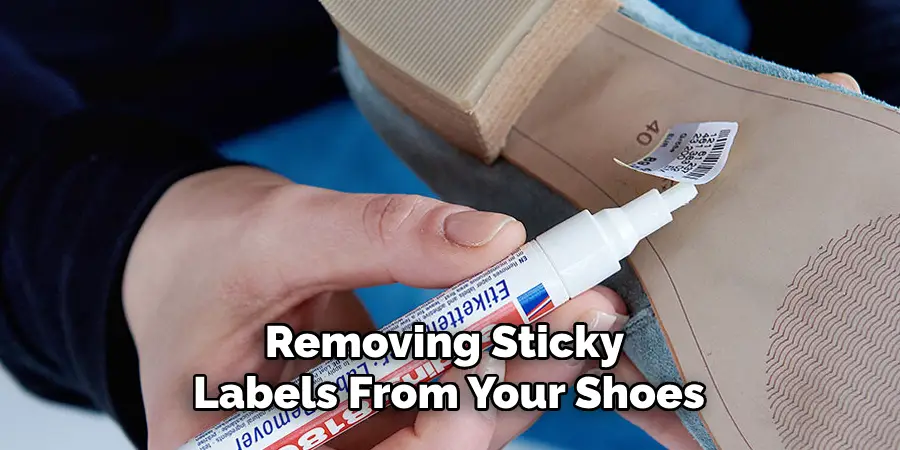
Conclusion
Removing sticky labels from inside shoes can be a hassle, but with the right methods, it’s a straightforward task. Whether you use heat, rubbing alcohol, oil-based products, or commercial adhesive removers, each technique offers a reliable way to tackle those stubborn labels. It’s important to choose the method that best suits the material of your shoes to avoid any potential damage.
Regularly checking and maintaining your shoes can prevent future adhesive buildup, ensuring your footwear remains comfortable and clean. Investing a little time in removing these labels not only improves the look and feel of your shoes but also extends their lifespan. Thanks for reading, and we hope this has given you some inspiration on how to remove sticky labels from inside shoes!

